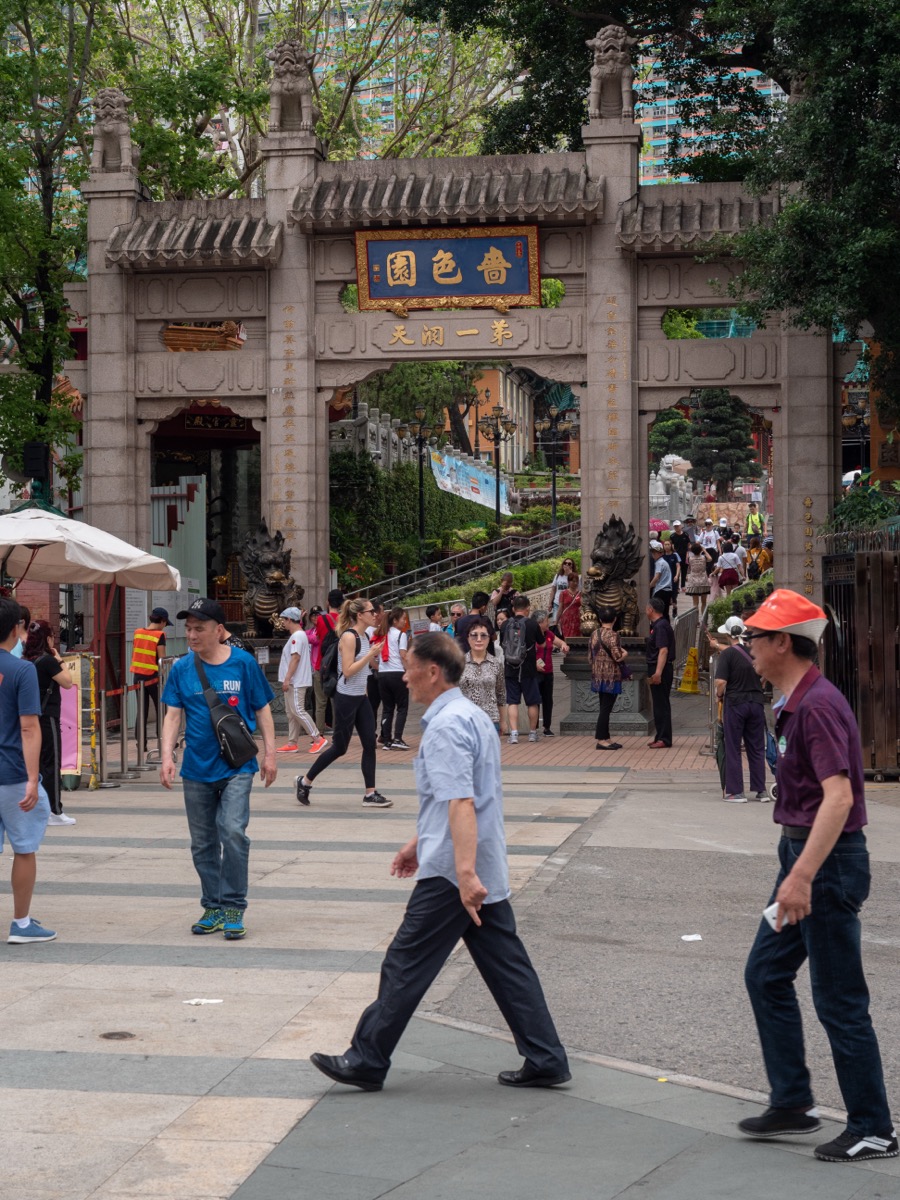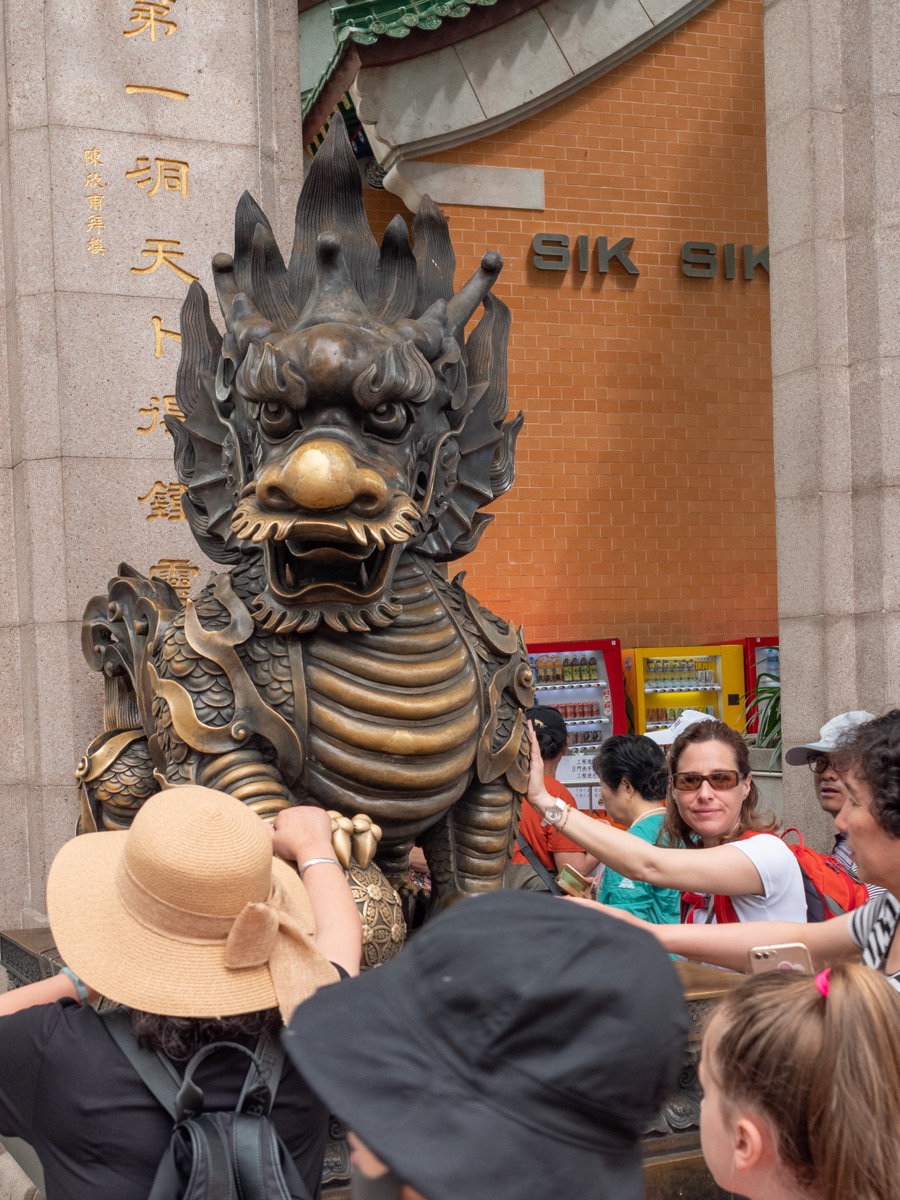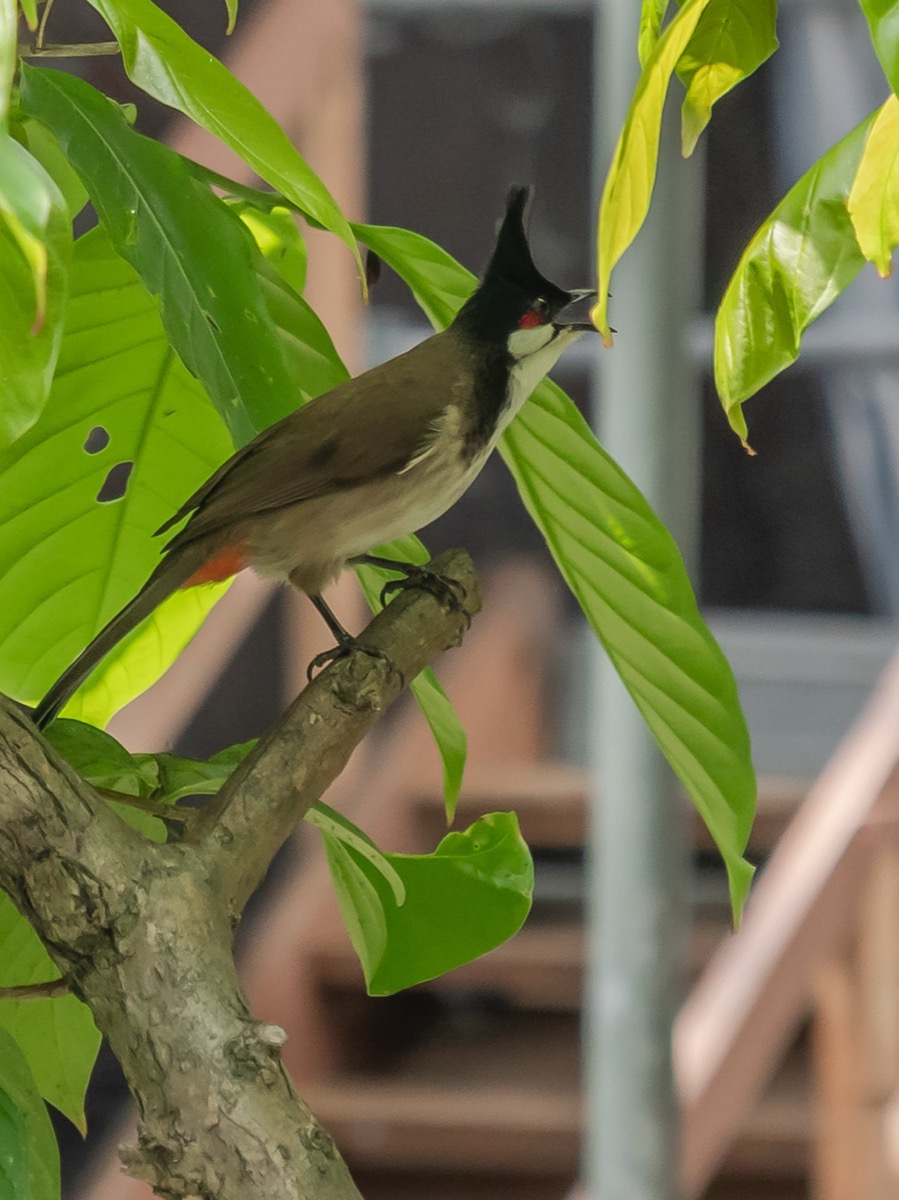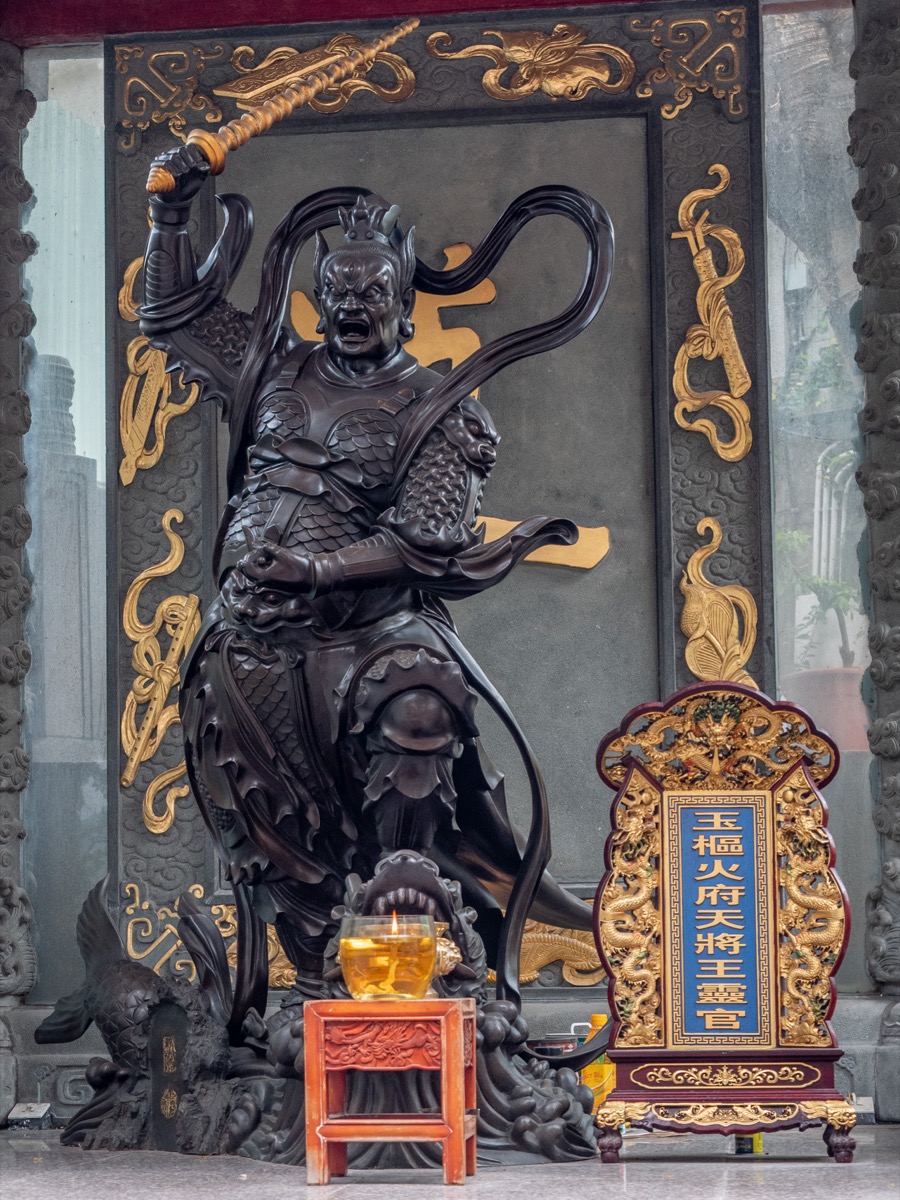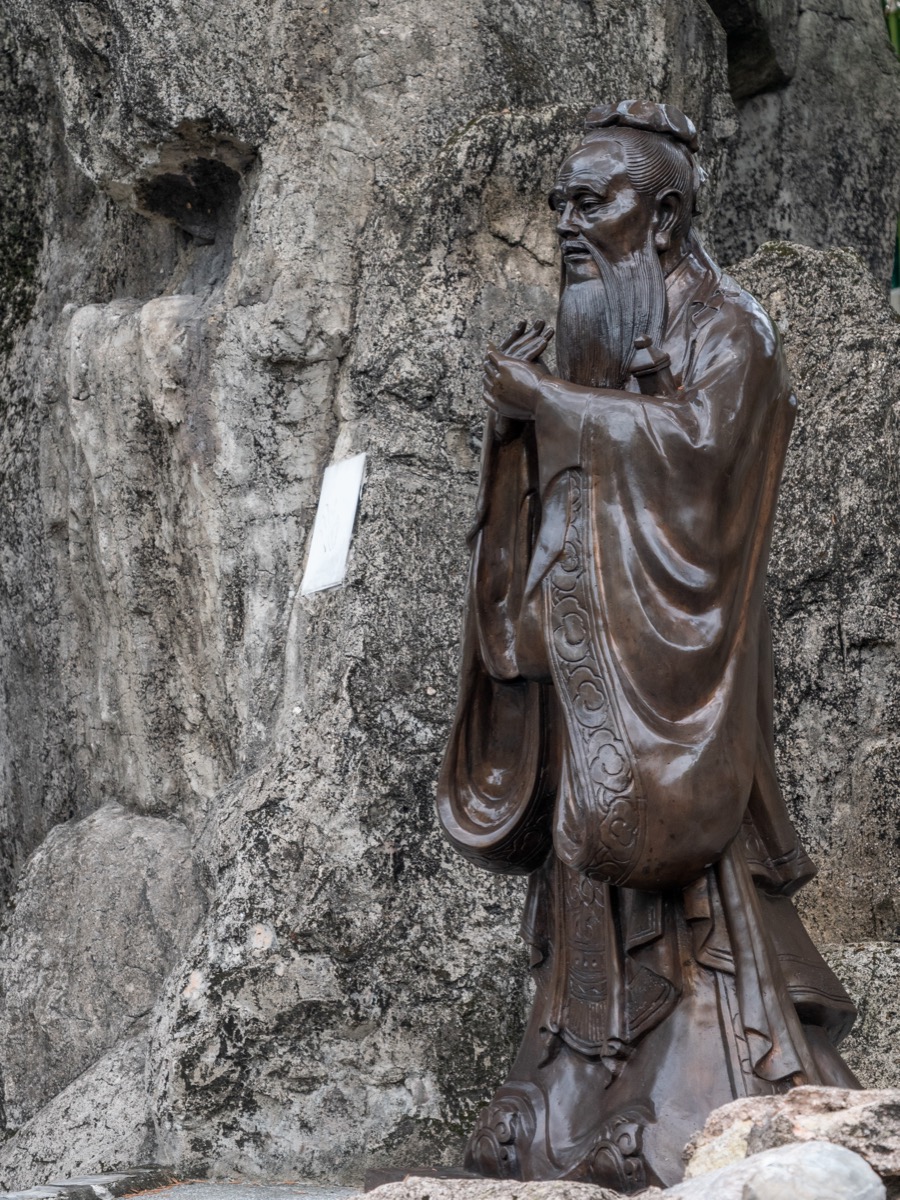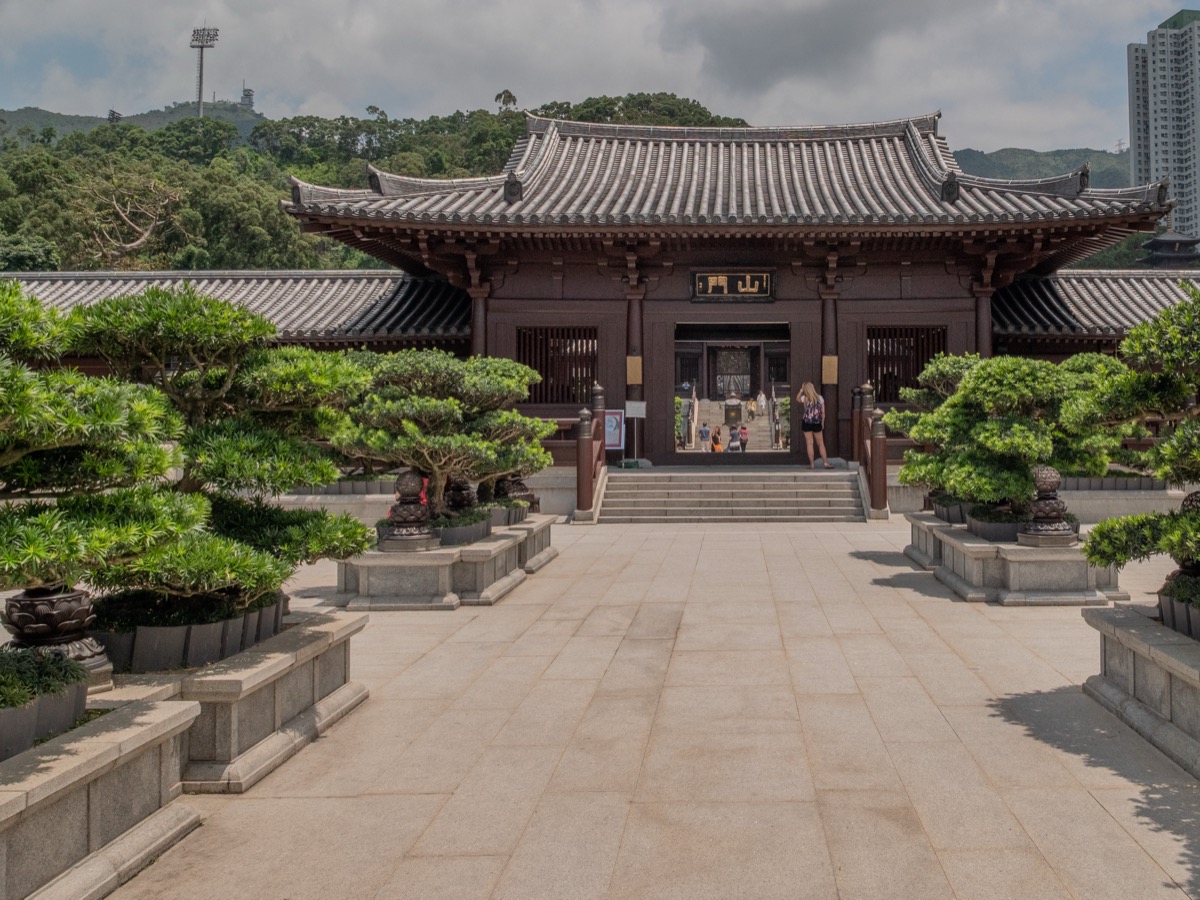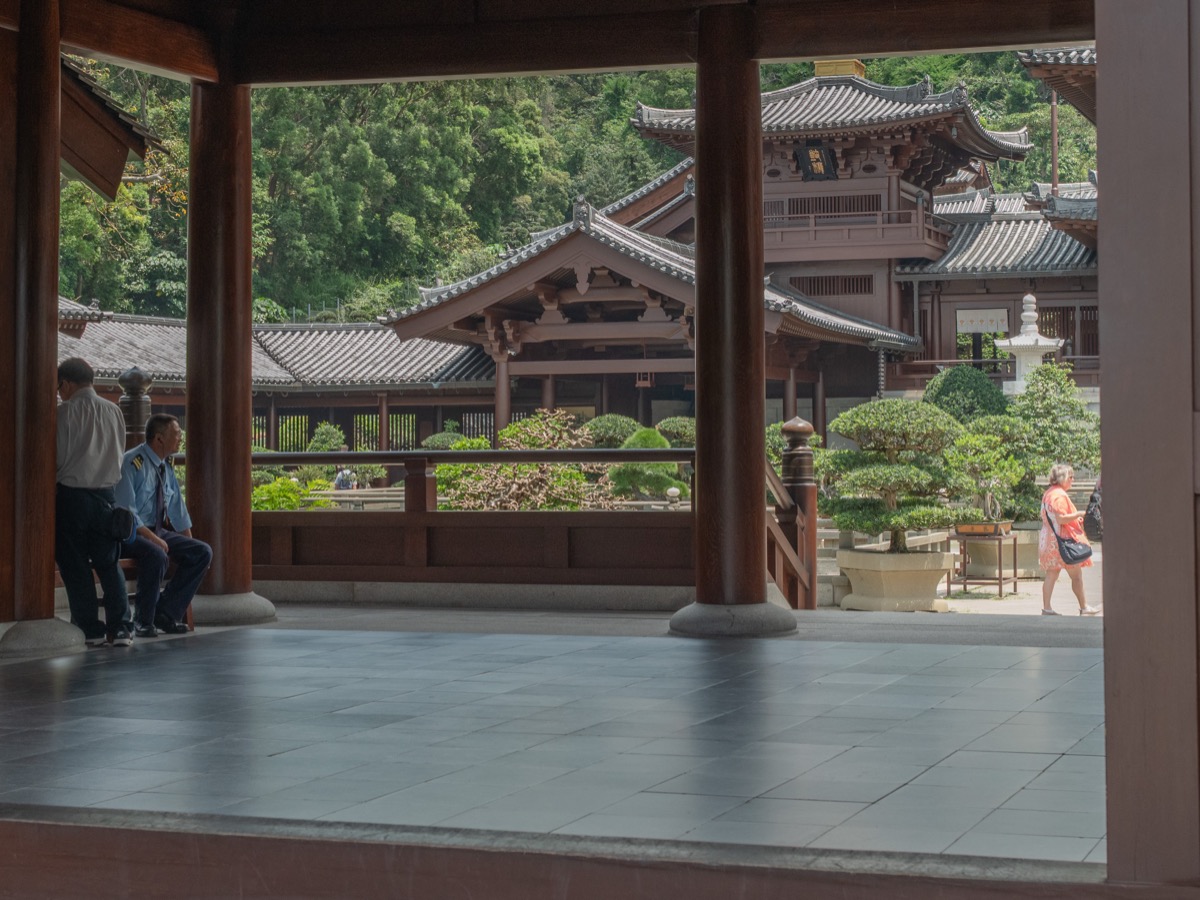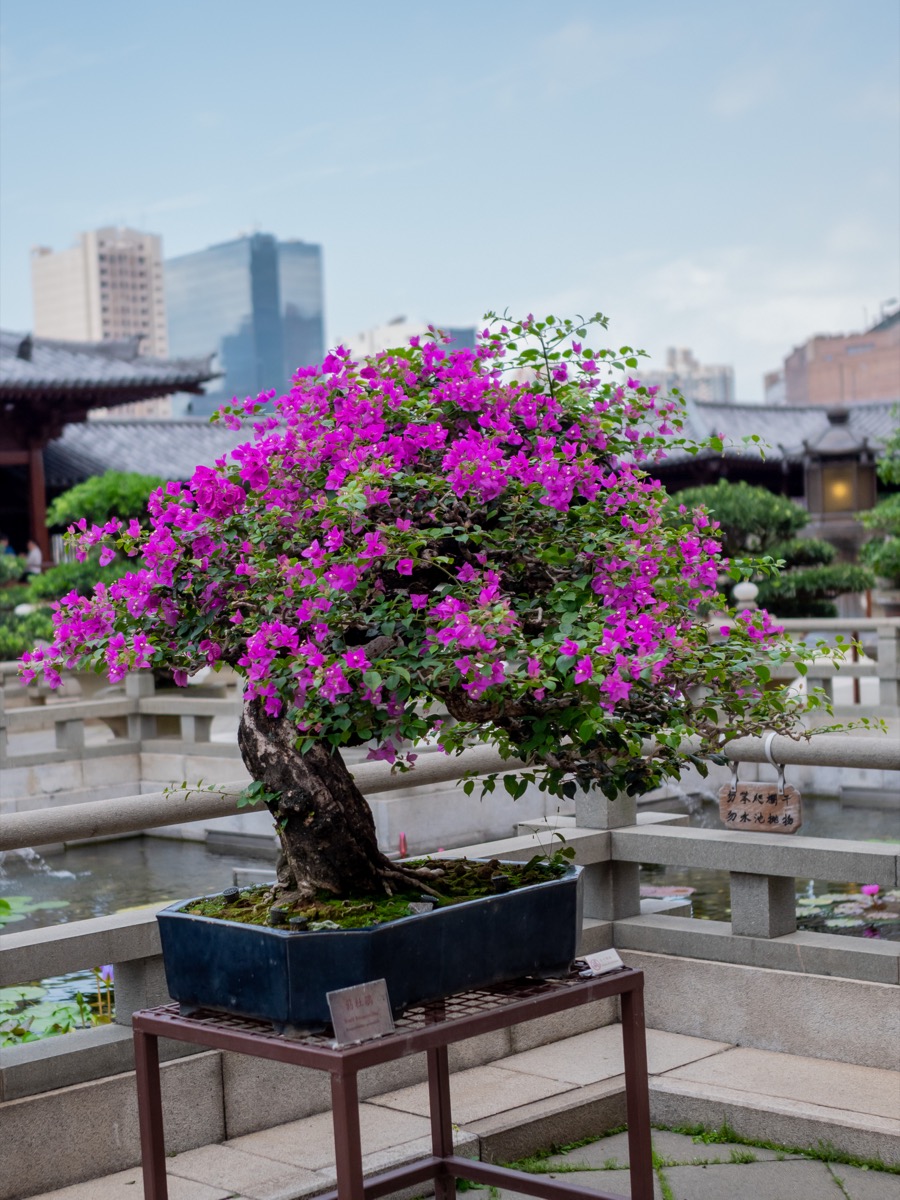A Temple at the Heart of Popular Spirituality
The Wong Tai Sin Temple (黃大仙祠) is located in the district of the same name, in north Kowloon. It is dedicated to Wong Tai Sin, a legendary Taoist immortal known for his ability to heal the sick and grant sincere wishes.
Founded in 1921, the temple is today a major pilgrimage site for Hongkongers of all faiths.
Symbolic Architecture
The temple is a richly decorated complex blending Taoist, Buddhist, and Confucian elements. You can find:
- The Main Altar with the statue of Wong Tai Sin.
- The bonsai garden and its peaceful ponds.
- The Five Elements gallery, representing wood, fire, earth, metal, and water.
- Traditional red gates, hanging lanterns, roofs adorned with dragons.
The atmosphere is dense and colorful, saturated with incense, murmurs of prayers, and ritual gestures.
A Central Practice: Divination
The temple is particularly famous for the kau cim (求籤) practice, a traditional form of divination:
- The devotee shakes a cylinder containing numbered sticks until one falls out.
- They take the number to an interpreter, who reads the associated oracle.
- The message is often poetic or symbolic, to be interpreted according to personal context.
This practice is popular for making decisions, especially during the Lunar New Year.
Worship and Ceremonies
The temple is active year-round but sees peaks during:
- The Chinese New Year (offerings and prayers for luck).
- Wong Tai Sin’s birthday (23rd day of the 8th lunar month).
- School exam periods (prayers for success).
Devotees bring:
- Incense sticks, fruits, rice cakes.
- Joss paper to burn as offerings to ancestors.
- Blessed talismans, sometimes distributed by Taoist monks.
Access and Atmosphere
- MTR Wong Tai Sin, exit B2 (the temple is right opposite).
- Free entry, except for some ritual areas or services.
- Lively yet respectful ambiance, especially on weekends.
- Calligraphy, divination, and souvenir stalls line the entrance.
It is also a favorite spot for photographers, for its vivid colors, lively scenes, and palpable spirituality.
A Hong Kong Spirituality
Wong Tai Sin embodies a form of Chinese popular religion specific to Hong Kong:
- A mix of Taoism, Buddhism, and Confucianism in practice.
- Worship of immortals and ancestors.
- Importance of personal divination and individual merit.
The temple is both a place of worship, a community space, and a mirror of local cultural identity.
Conclusion
The Wong Tai Sin Temple is more than a sanctuary: it is a living spiritual center, at the crossroads of traditions, popular practices, and everyday Hong Kong life. People come here to pray, seek their future, or simply breathe a moment of mystical calm in the heart of the city.
This Buddhist temple is famous for its traditional wooden architecture from the Tang dynasty style, as well as the magnificent Nan Lian Garden located right next to it. Diamond Hill is a residential area with some shopping centers and good transport links, notably the Diamond Hill MTR station.
The Wong Tai Sin Temple (黃大仙祠) is a Taoist temple dedicated to Wong Tai Sin (also Huang Daxian (黃大仙)), a popular Chinese Taoist deity with healing powers.
Statue of Zēngzhǎng Tiānwáng (增長天王)
One of the Four Heavenly Kings (四大天王, Sì Dà Tiānwáng) — guardian deities common in East Asian Buddhist temples.
Zēngzhǎng Tiānwáng, the King of the South, often depicted holding a raised sword, is the protector of the south and associated with growth.
Statue of Confucius, Kǒngzǐ
Chi Lin Monastery (Chi Lin Nunnery, 志蓮淨苑)
Founded in 1934 and rebuilt in 1998 in Tang dynasty style, the Chi Lin Monastery is one of Hong Kong’s most beautiful Buddhist sanctuaries. Its wooden architecture, built without nails using ancient techniques, blends harmoniously with a carefully maintained garden. The site houses statues of Buddha, bodhisattvas, and sacred Chinese figures.
